


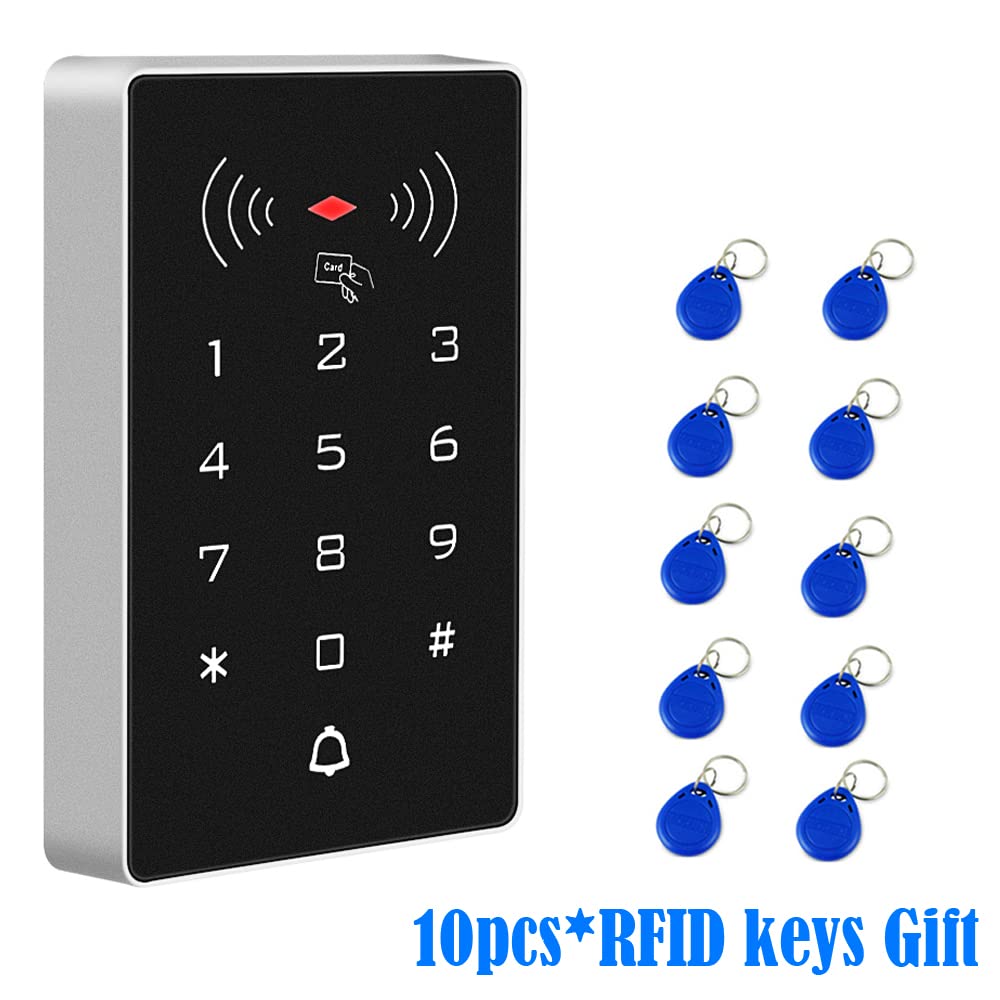

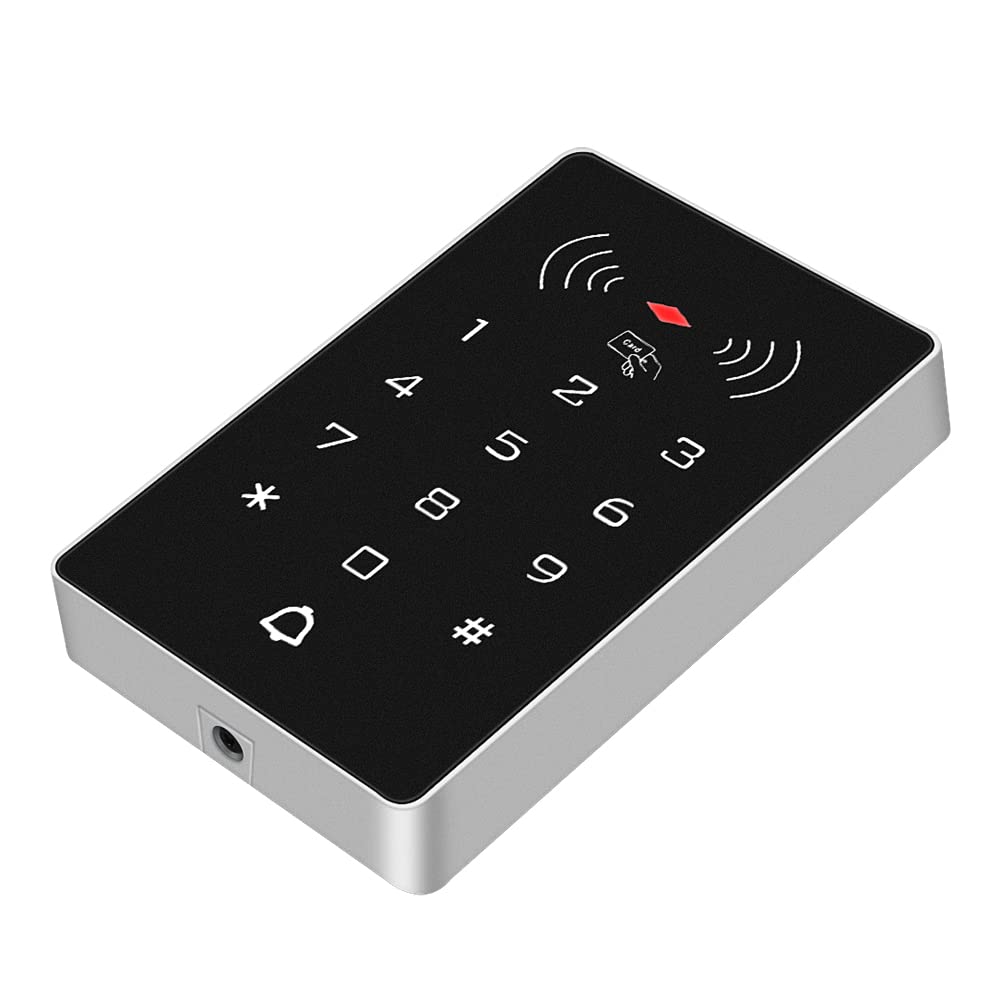
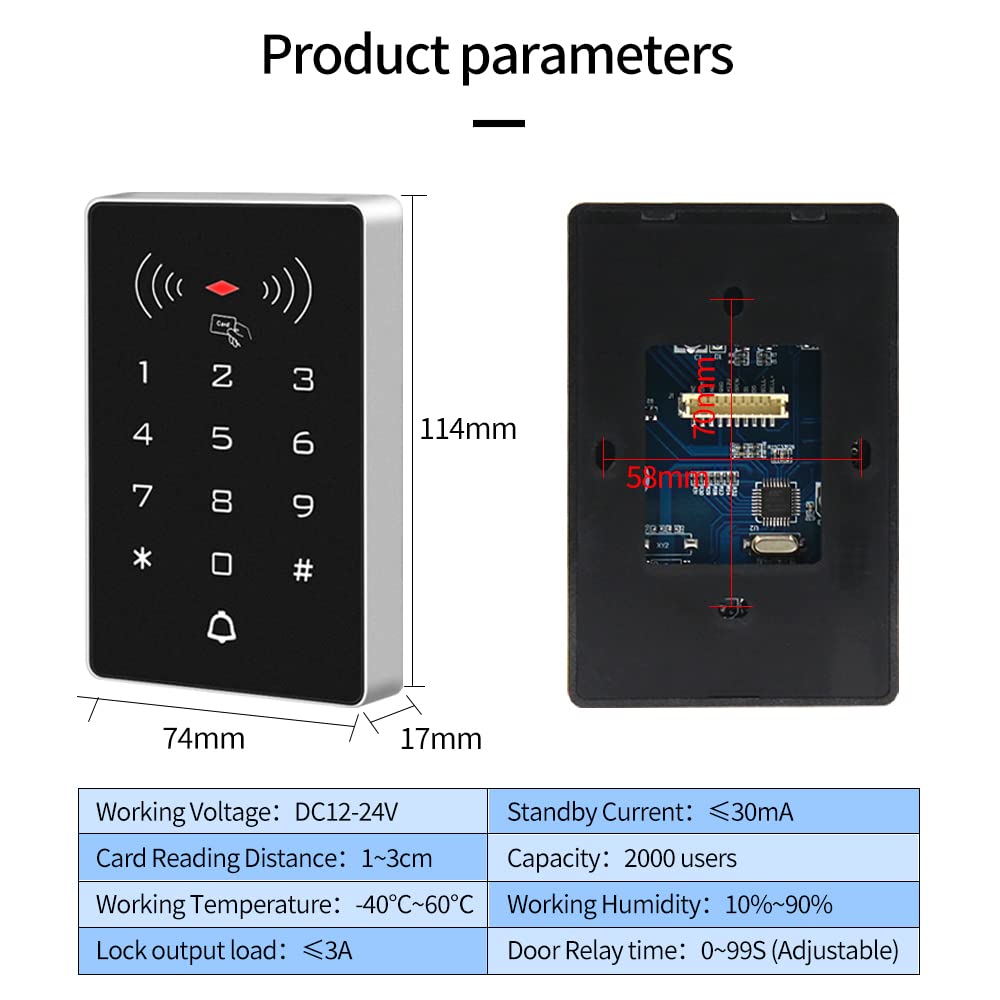
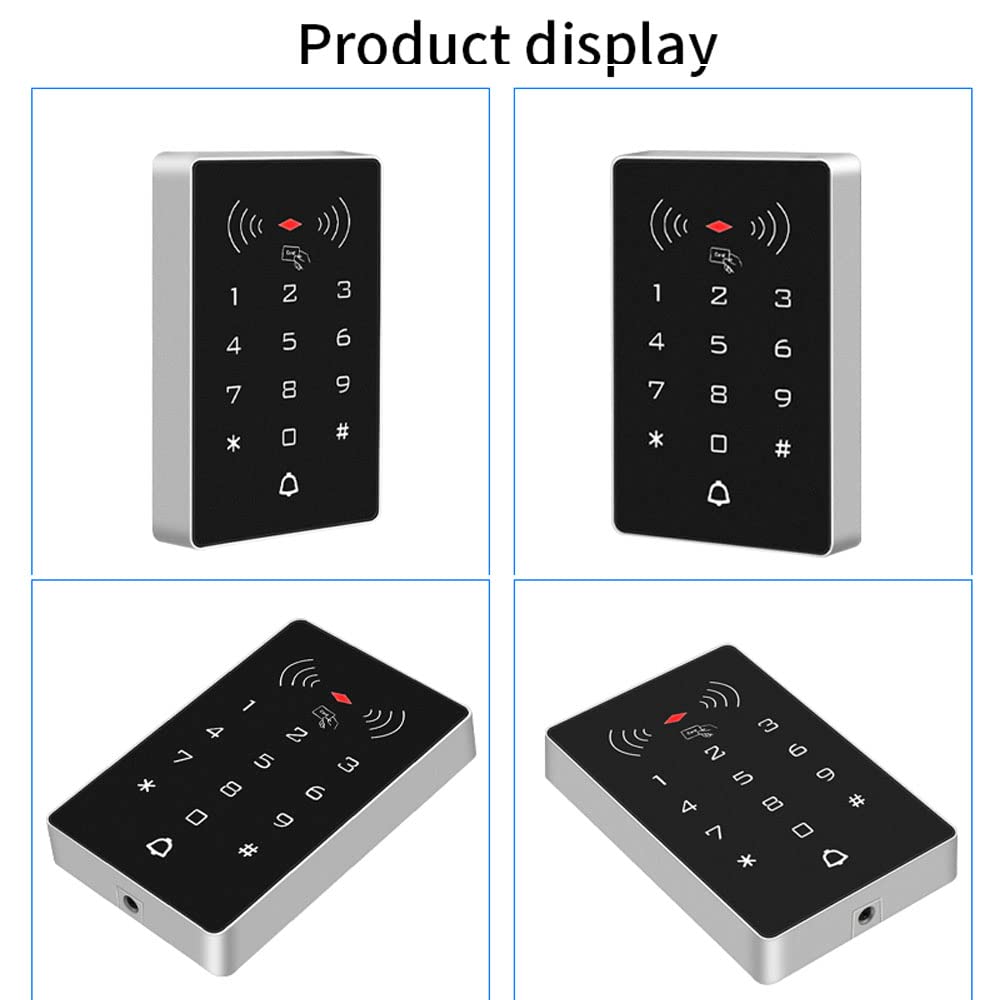
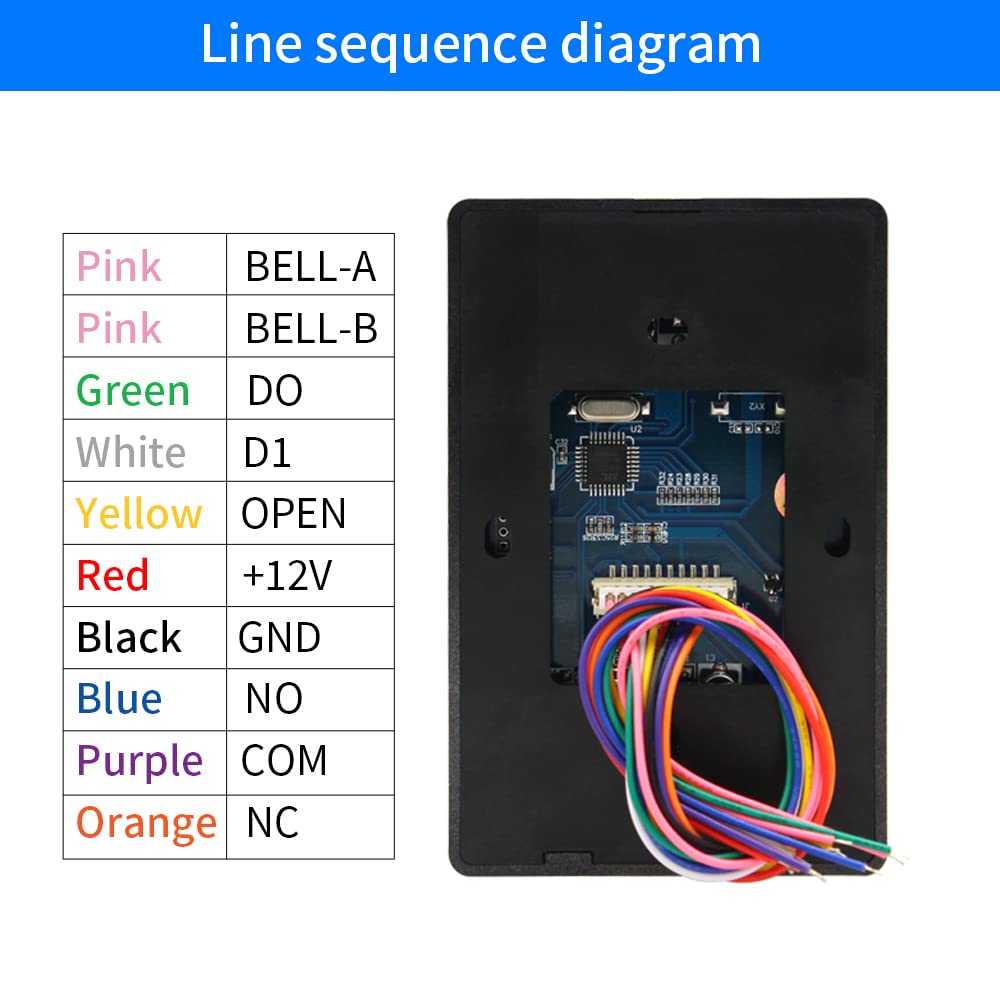
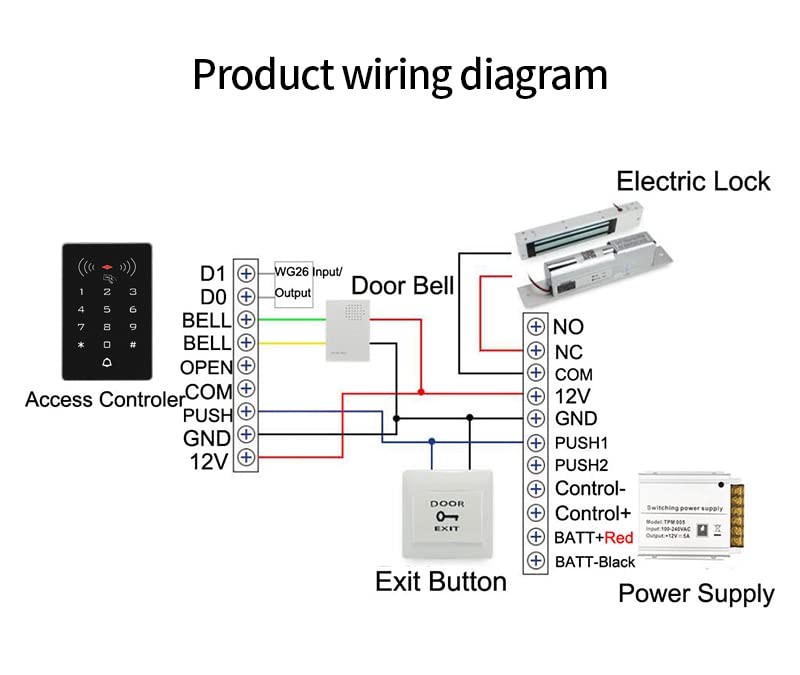
🔐 Secure Your Space, Elevate Your Access!
The BSTUOKEY Access Control Keypad Reader is a cutting-edge door access control system designed for both residential and commercial use. With a capacity for 2000 users, it supports various locking mechanisms and offers multiple access methods, including RFID cards and PIN codes. Its Wiegand 26 compatibility ensures easy integration with existing systems, making it a versatile choice for modern security needs.
| Voltage | 12 Volts |
| Item Weight | 0.12 Kilograms |
| Color | black |
R**R
Hard to follow documentation for this product
With some help form the BTSU0 people, I was given some important steps to making the keypad work.But I was not able to use the unit. And will likely purchase a different keypad.
J**H
No Manual Comes with this
No manual comes with this and it is therefore obsolete unless you already know how to use it.
C**D
Fun RFID Type 1 device for simple data projects
I enjoy tinkering with and reviewing various hardware items. This device is a simple RF capable keypad with relay, designed for various projects.Hardware: The device is rather rugged and simple, designed to work in 12-24V systems. Per the specs on the 78M05 regulator (most of the device is 5V), it should tolerate 7-35V, unless there is something I missed in the board design. (7V is needed to regulate down to 5V, 35V is the upper limit of the 78M05.)The PC board has a removable connector for the RF loop and all the logic circuity on one side. The opposing side is just the switches for the keypad, two LED for status indicators, and vias/traces. The contact relay is an EA2-5, capable of handling about 30V at 1A, though I wouldn't push it past 24V@1A personally. The heart of the device is an STC 8F2K32S2, with 32K of flash. You can find spec sheets, example programs, and a compiler/programmer via google. I'll also note that there is a header (J3-pictured) on the board with +5v, Tx, RX, and Gnd wired directly to the STC. Nearly every IO pin on this chip is in use for something, from the keypad, to leds, to the relay, to sound.Software: The software for this is proprietary, likely coded in assembly from the looks of the dev kits. I'll cover most of it's function in the documentation section. I did not attempt to dump the rom, or alter it's programming, but I assume both could be accomplished if one used the dev kit properly.Documentation: The documentation is not the worst I've read, but there are some problem items here and there. Overall it does cover all the bases, though not always in the most clear fashion.The base functions allows you to program the reader to act in conjunction with a security system that speaks Wiegand protocols (WG26/34), or as a stand-alone access device using the relay. One can program cards, pin codes, or both, and require either or both for operation. The relay can be connected as you like (NC, NO, and COM are included in the bundle-out), and can be programable triggered for 1 to 99 seconds. (NOTE: NO is called "normally on", but is in fact normally open.) The document also includes three sample wiring diagrams for several scenarios, all of which look sound.The documentation also includes instruction for changing various settings, including the default master password, adding/removing pins/cards, stand-alone use requirements, and even terminal-to-terminal data copy functions. It also allows for a single "public code", which allows keypad entry with no card, regardless of settings.I will note two major items where the documentation is unclear:1. There is discussion of card/pin ID slots, and how to program values in a given slot. There is no indication on how many slots the device has, or how cards/pins programed without specifying a slot are handled. From the item description, I would guess there are 2000 slots?2. There is a method to create a "master add" and "master delete" card, and a whole section on how to use those cards to ease adding/delete pins and cards. What's hard to find is how to *create* these cards, which is located in the "Reset to Factory" section. There appears to be no other way to change these card IDs beyond factory reset, nor can they be referenced by ID (nor used for normal operation, obviously).Security: This device would be fun for projects, and for simple things one wants mildly passive security on. Like a child's bank, or maybe a shed for low-value item storage. But I would advise strongly against using it for any real security system or securing anything of value. The RF reader only understands Type 1 RDIF tags, which have no security or encryption in their transmissions (easy to listen in/clone with the right equipment). Also, if the relay is used to trigger access, bypassing the pad is trivial to anyone who's looked at this type of electronics. Two minutes with a screw-driver and a paper-clip, and I could defeat this pad, gain entry, and put it back together. And worse, you'd be none the wiser, as no damage would be done and it would continue to function normally.Other notes:The doorbell button is a simple pass-through button. It does not register with the device in any way, just the wires coming from the connection block. The keypad does not light up in any way. There are no LED on the front/panel side of the circuit, outside the usage/power indicator. They could be added if desired, as there is space, but that would induce more power drain while operating.
D**S
Makes quick work of an entry system
I got this to add an RFID and key code entry for my garage. This unit works great - you just have to run a wire pair back to the garage door opener terminals.But do remember - when you run the wires outside uor house, all a thief has to do is cut the wire and short them together to open your garage. You need to make sure that the wiring is inaccessible even if the unit is pried off and destroyed. If you need better security, you should go with a coded wireless system.
Trustpilot
2 months ago
2 weeks ago